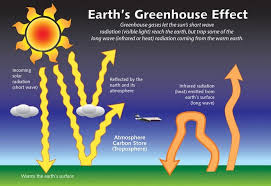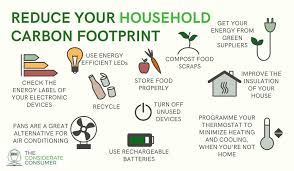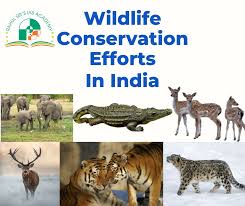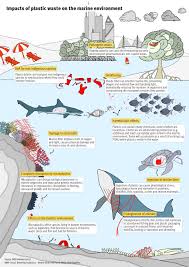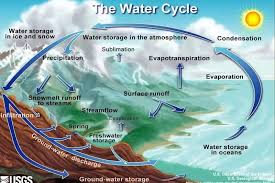Climate change is one of the most pressing challenges of the 21st century. As temperatures rise and weather patterns shift, understanding the science behind global warming becomes essential for students, educators, policymakers, and the general public. At Study Rhino, we believe knowledge is the first step towards change. In this article, we explore the science of global warming and climate change: what causes it, how it works, and why it matters.
What Is Global Warming?
Global warming refers specifically to the long-term rise in the average temperature of the Earth’s atmosphere and oceans. Over the past century, this warming trend has accelerated at an unprecedented rate, mainly due to human activities.
When scientists talk about global warming today, they usually mean the warming caused by the greenhouse effect intensified by human activities like burning fossil fuels, deforestation, and industrial production.
The Greenhouse Effect: Earth’s Blanket
The greenhouse effect is a natural process that warms the Earth’s surface. It works like this:
- Solar radiation from the sun reaches the Earth’s atmosphere—some is reflected back to space, and the rest is absorbed by the land and oceans, heating the Earth.
- The Earth emits energy back into the atmosphere as infrared radiation (heat).
- Greenhouse gases such as carbon dioxide (CO₂), methane (CH₄), water vapor (H₂O), and nitrous oxide (N₂O) trap some of this heat, preventing it from escaping into space.
- This trapped heat keeps the Earth at a life-supporting average temperature of around 15°C (59°F).
Without the greenhouse effect, Earth would be about 33°C (59°F) colder, making it uninhabitable for most current life forms.
Human Impact: Enhancing the Greenhouse Effect
While the greenhouse effect is natural and necessary, human activities have amplified it, leading to excessive warming. This is mainly due to:
- Burning fossil fuels (coal, oil, and natural gas): Releases massive amounts of CO₂.
- Deforestation: Trees absorb CO₂, so cutting them down reduces Earth’s ability to balance carbon levels.
- Agriculture: Releases methane from livestock and nitrous oxide from fertilizers.
- Industrial processes: Emit a variety of greenhouse gases.
Since the Industrial Revolution (mid-18th century), atmospheric CO₂ levels have risen by more than 50%, reaching over 420 parts per million (ppm) as of 2025 — the highest level in at least 800,000 years.
Evidence of Global Warming
Scientists have gathered overwhelming evidence that global warming is real and primarily driven by human activity. Some key observations include:
- Temperature Records: The ten warmest years on record have all occurred since 2010.
- Glacial Retreat: Glaciers worldwide are shrinking rapidly.
- Sea-Level Rise: Global sea levels have risen by about 20 cm (8 inches) since 1900.
- Extreme Weather: There are more frequent and intense heatwaves, droughts, and hurricanes.
- Ocean Warming and Acidification: The oceans have absorbed much of the extra heat and CO₂, leading to rising sea temperatures and increased ocean acidity, which harms marine life.
Climate Change vs. Global Warming
Although often used interchangeably, global warming and climate change are not the same:
- Global warming refers specifically to the Earth’s rising surface temperature.
- Climate change includes global warming and the broader range of changes that are happening to our planet — including rising sea levels, shrinking mountain glaciers, accelerating ice melt in Greenland, Antarctica, and the Arctic, and shifts in flower/plant blooming times.
Climate change encompasses changes in precipitation patterns, more frequent extreme weather events, and long-term shifts in climate zones.
The Science Behind Climate Models
Scientists use climate models to predict future climate conditions. These models are sophisticated computer simulations that take into account:
- Atmospheric chemistry
- Ocean currents
- Land surface processes
- Ice sheet dynamics
- Solar radiation
Climate models have consistently shown that without reductions in greenhouse gas emissions, global temperatures could rise between 2°C to 5°C (3.6°F to 9°F) by 2100 compared to pre-industrial levels.
The more greenhouse gases we emit, the more dramatic and disruptive the changes will be.
Key Greenhouse Gases
Here’s a closer look at the most important greenhouse gases and their sources:
| Gas | Sources | Impact |
| Carbon Dioxide (CO₂) | Fossil fuel combustion, deforestation | Long-lived; primary contributor to warming |
| Methane (CH₄) | Livestock, agriculture, fossil fuel extraction | More potent than CO₂ but shorter-lived |
| Nitrous Oxide (N₂O) | Agricultural activities, industrial processes | 300 times more potent than CO₂ |
| Fluorinated Gases | Industrial activities | Very powerful but present in smaller quantities |
Feedback Loops: Warming That Causes More Warming
One of the scariest aspects of climate science is positive feedback loops—processes that accelerate warming once they start:
- Ice-Albedo Feedback: As ice melts, it exposes darker surfaces that absorb more heat, causing more ice to melt.
- Permafrost Thawing: Thawing permafrost releases methane, a potent greenhouse gas.
- Forest Dieback: Dying forests release CO₂, further warming the atmosphere.
These feedback loops make the fight against climate change even more urgent.
Consequences of Global Warming
Unchecked global warming leads to profound consequences:
- More Extreme Weather: Heatwaves, floods, droughts, hurricanes, and wildfires are becoming more frequent and severe.
- Sea-Level Rise: Threatening coastal communities with flooding and erosion.
- Biodiversity Loss: Species unable to adapt quickly enough face extinction.
- Food and Water Scarcity: Changes in rainfall patterns affect crops and freshwater supplies.
- Human Health Risks: Heatwaves, new disease patterns, and air pollution directly impact human health.
- Economic Disruption: Damage to infrastructure, reduced agricultural yields, and forced migration strain economies.
Solutions: What Can Be Done?
The good news is that solutions exist. Scientists, governments, businesses, and individuals all have a role to play. Key strategies include:
- Reducing Emissions
- Transitioning to renewable energy like solar, wind, and hydroelectric power.
- Improving energy efficiency in buildings, transportation, and industries.
- Supporting carbon pricing policies (e.g., carbon taxes, cap-and-trade).
- Enhancing Carbon Sinks
- Protecting and restoring forests, wetlands, and grasslands.
- Investing in carbon capture and storage (CCS) technologies.
- Adapting to Changes
- Building flood defenses and designing climate-resilient infrastructure.
- Developing drought-resistant crops.
- Preparing healthcare systems for climate-related health impacts.
- Educating and Raising Awareness
- Education campaigns like those at Study Rhino help people understand the science and take informed action.
- Supporting climate education in schools prepares the next generation of environmental leaders.
The Role of International Cooperation
Climate change is a global problem that requires global solutions. International agreements like the:
- Kyoto Protocol (1997)
- Paris Agreement (2015)
have set targets for emissions reductions. The Paris Agreement, signed by nearly every country, aims to keep global warming well below 2°C (and ideally 1.5°C) above pre-industrial levels.
Staying within these limits is crucial to avoiding the most catastrophic effects of climate change.
Conclusion: A Defining Challenge of Our Time
The science of global warming and climate change is clear: humans are causing significant changes to our planet’s climate, with serious consequences for ecosystems and societies. However, by acting decisively—through cutting emissions, adapting to new realities, and educating others—we can still shape a more stable, livable future.
At Study Rhino, we encourage every student and reader to not only learn about these issues but also to become part of the solution. Whether it’s through studying science, advocating for sustainable policies, or making greener choices in daily life, every action counts.
Together, we can tackle the challenge of climate change and protect our world for future generations.
Word Count: ~1,515 words
Would you also like me to create a neat infographic or a simple quiz for students based on this article? 🌍📚 It could be a great interactive addition!
